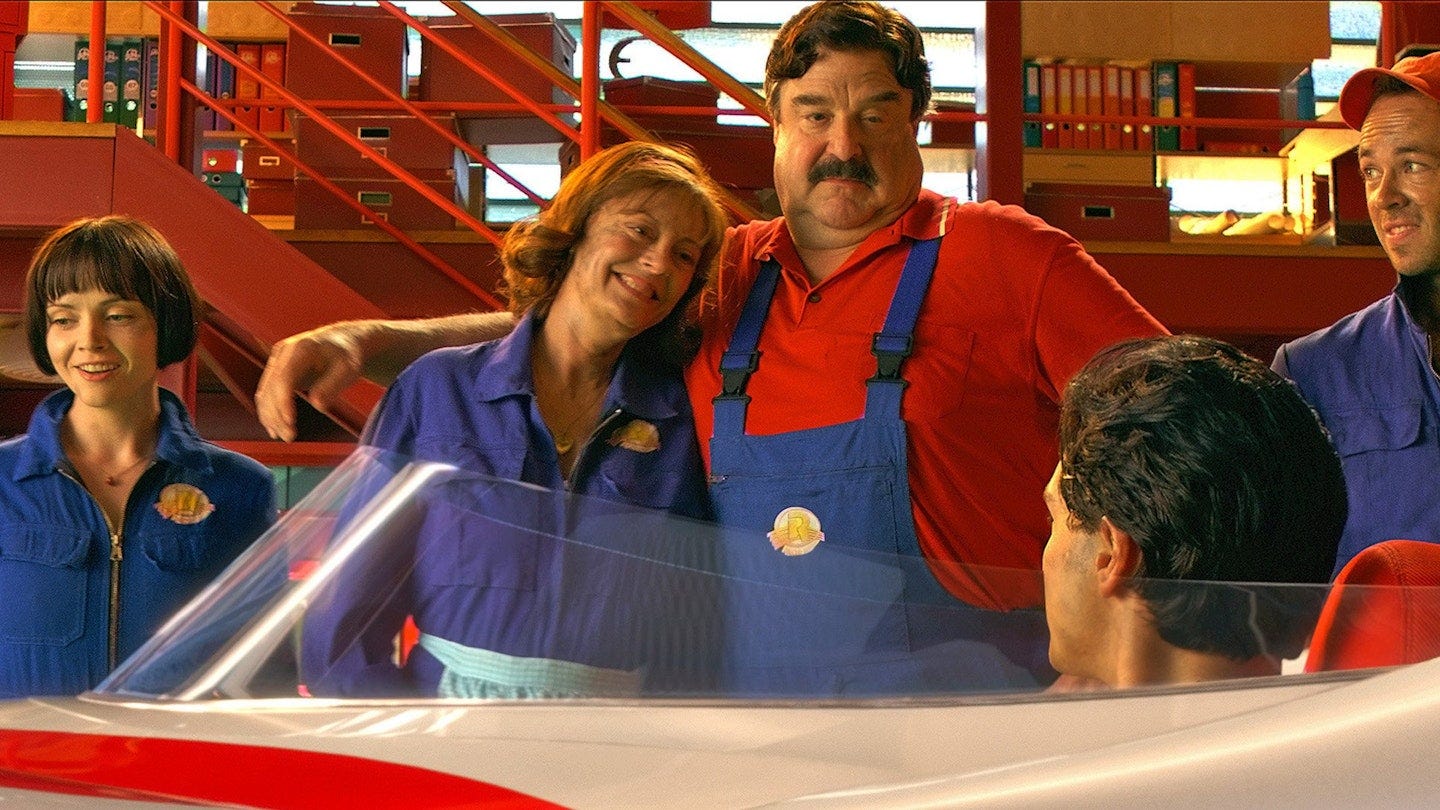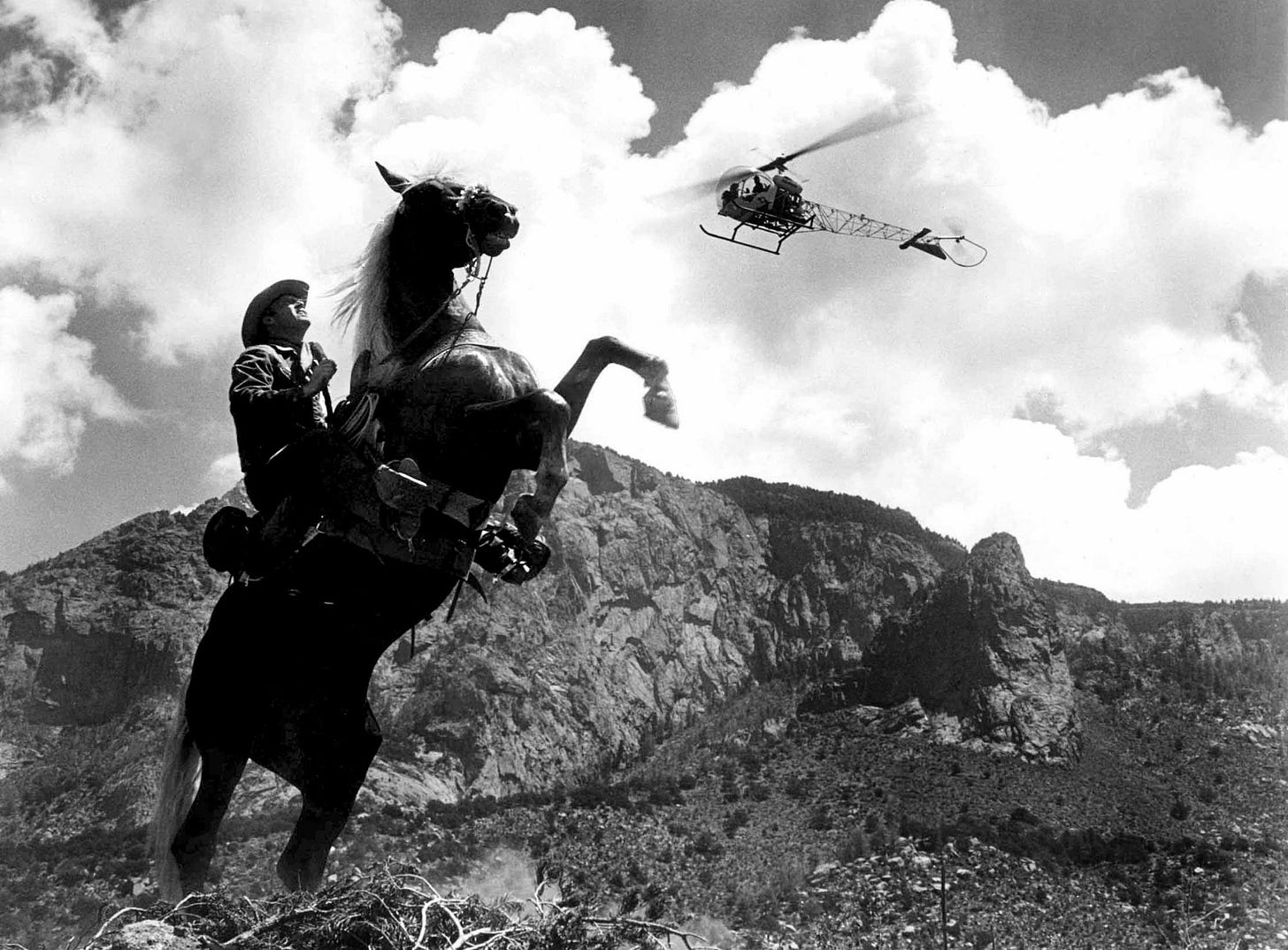At the Cinema, vol. 2
A re-master, an old sport, a visual masterpiece, and an old gem.
At the Cinema is a round-up of movies that I have watched in the theater recently — not necessarily new releases — and some quicker, shorter thoughts on them.
Princess Mononoke
I cling to visions of my first experience with Princess Mononoke, which was my first experience with Hayao Miyazaki and Studio Ghibli. My dad, a big movie enjoyer, was deeply interested in the film, and, I assume, let my brother and I watch it shortly after it was released, when I was 10, 11, or 12 years old. I know I watched it before 2003, because I know I was familiar enough with the studio and filmmaker to clock the discussion around Spirited Away being in contention for the Best Animated Feature at the 2003 Academy Awards.
I, too, was a big movie enjoyer by that age, and I was watching plenty of the standard, excellent children’s fare coming from Disney and Pixar and Nickelodeon and the Disney Channel. I was also, surely, consuming a lot of content from cable networks showing movies, from my older sisters watching movies, and from my parents watching movies without me – which I would watch segments of from around corners, hidden in the dark. I think I saw my first on-screen boobs in Vanilla Sky, which remains the only five seconds I have ever seen of that movie.
Despite my broad access to different types of stories, Princess Mononoke was an unparalleled revelation. This was a cartoon movie that was bloody, and scary, littered with death and overbearingly dark musical overtones. This was “for kids”, I thought, but it was certainly not supposed to be watched by someone like me. It was a film with such a strong, forceful perspective. It was the first time that metaphor really drew me in and worked me over. I doubt I even understood what it was saying, exactly, or what it was doing to me, exactly. It is the first memory I have of being fully immersed in a movie while watching from home. The lack of a dark theater and giant screen did not matter: the images, the sounds, the characters, the action were enchanting and intoxicating, filling my lungs and ears and eyes, goosepimpling my flesh, suffocating my attention.
Studio Ghibli has re-mastered and up-scaled the movie to a new 4K release, and has thrown it back into theaters. IMAX theaters, to be precise. There was a solid crowd gathered to see it on a Sunday night when some friends and I gathered. I was the only one in the group to have a firm memory of and relationship with the movie, which was exciting. I was surprised at the effect the setting and the effect that seeing the movie with so many other people had on my experience with this, my 6th (?) viewing. People laughed when I didn’t expect them to, and created other tensions to my memories. It was thrilling.
I don’t think there was anything like this movie beforehand, and I don’t think there has been anything like it since. This is such a departure in style and ethos and structure and tactics for Miyazaki, the filmmaker whose previous three films were about a plane flying big, a broom flying teenage girl, and a big fluffy forest spirit who can summon a bus that is also a cat. This movie is dark, it is scary, it is big, it is sad, and it, thankfully, has a “happy ending” tacked onto the end of it. But this is Miyazaki explicitly making something for an older audience, creating his first, and clearest, warning to his fans and viewers: things are not alright, we are making them worse, and we need to change. I hate how right he remains.
You can watch the movie on HBO Max, wherever you rent or buy movies, and also still in its new 4K remastering in theaters around the U.S.
Eephus
There is a battle raging within me, as I imagine one rages in anyone aging out of their prime as western commercial culture’s target demographic: everything is going away, and everything is coming back. As Major League Baseball storms back into the lives of tens of people in America and nearly every living being in Japan, Carson Lund’s Eephus arrives to show us the slow, natural death of a pastime.
Set in a small Massachusetts town, some time in the 1990’s, Eephus is the story of a local community of ball players battling through their last game on their home field before the township builds a new middle school on the plot of land. Over the course of a late October day – and night – the twenty lifers bat, bunt, and baserun their way towards an elusive final score, in a game that no one wants to end.
The beauty of Eephus is in its simplicity, and in its goal: have a good time. There is no attempt to wax poetic about the values and virtues of the sport these men play, or in seeing something through to the end, or in bonding with your community, or with lonely men coming together. Instead, it is funny, it is strange, it is ridiculous, and it is true to life. The crowd I saw it with, including a couple of friends, seemed like a room of ball-knowers, which may have increased the laughs-per-minute that the movie received, but I think almost anyone would have a great time hanging out with this thing.
The film is another effective argument for filmmakers’ recent use of period storytelling, as a scruffy, quiet hang-out movie like this operates best if its characters don’t have direct, constant lines of communication with the people outside of the baseball diamond. Cell phones, laptops, wireless earbuds, and any other modern convenience would yuck Eephus’ yum, and it is only in writing this piece that I learned that the film was placed in a certain time-frame. The content of the movie does not draw attention to cosmic time, only local time, and ancient time-keeping: the setting of the sun.
Eephus is still in theaters, and is scheduled to release on streaming on April 15th.
Speed Racer
This is genuinely one of my favorite movies. The geniuses behind THE MATRIX made this, and it has nearly the same “big idea” effectiveness. No movie has ever tried to look like this, no one else has yet been capable of making a movie look like this, and it is one of the best, coolest looking movies ever made, period.
See it next time you see it at a theater! Buy it on Blu-ray so you don’t lose data from streaming it online!
Lonely Are the Brave
I saw this movie on a Sunday afternoon while nursing a minor hangover. Really, I just wanted to get out of the house, and off of my couch, but I also didn’t want to actually do anything other than be sitting down watching something. There were only ~25 people in the main auditorium at The Hollywood Theatre, and the guy behind me fell asleep as snored through at least one-third of the movie.
These circumstances did not blunt my experience one bit, as I was massively surprised and enthralled with this story of a loner, a cowboy, a Korean War veteran kicking around the southwest in the mid-to-late 1950’s. The world has quickly moved beyond cowboys, beyond loners, beyond horse-riders, but “Jack” Burns (Kirk Douglas) is who he is. Gena Rowlands plays a former love interest, and she crackles on screen. Michael Kane plays Jack’s best friend, caught up in jail, who Jack decides to help escape; the friend he finds in the big house might have different ideas these days, as most people around Jack do. And Walter Matthau plays an empathetic, totally-over-it local Sheriff attempting to work through mundanity and a complete lack of local competence who is tasked with tracking down this obviously harmless, targeted icon of times passed.
The movie has a message and does a neat job of not being treacly or overbearing. The actors are sharp, the action is fulfilling, the composer adds a lot of heft with their score, and the movie just works. I’m glad that hangover brought me there.
Lonely Are the Brave is available wherever you rent movies.






